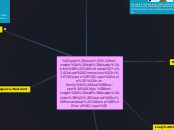The World of Fashion: A Complex and Interrelated System
Cultural Influence
Pop Culture
Influence of Celebrities/Media
Social Media
Trends can be shared quickly, therefore created quickly
#OOTD Posts
Ad Campaigns
Traditional Media
Advertisement Industry
TV/Film
Set in different time: Resurgance of that time period's trends
Once Upon a Time in Hollywood: lead to resurgance of 70's clothes
Bohemian Rapsody AND Rocketman: lead to resurgance of 70's/80's looks (in addition to interest in the music mentioned)
Stranger things: lead to resurgance of 80's trends
The want to dress as a favourite character
Examples
Euphoria: Influenced teens to try more outgoing colours in makeup and fashion
Outer banks: Teens dressed more "beachy" (started "VSCO girl" trend)
Red Carpet Events
(Haute Couture's influence on ready-to-wear fashion)
Economy
Tech Revolution
Cotton Gin
Making cotton production more efficient
The Spinning Jenny
The first of it's time- lead to more tech discoveries
Travel
More accessible travel= Less expensive to buy overseas goods (therefore making fashion more affordable)
E.g. Plans, Trains, Boats, Cars, etc.
Growth of Middle Class
Ready-to-wear/Mass production fashion
Fashion not just a thing to keep modest, but a way to expressive yourself
More readily available to everyone
Fast Fashion
Mormon Missionaries
Traditional Sikhs
Hijab
Cross
Bindi
Fashion System
Manufacturing Levels
Tertiary
Retail Industry
Salespeople
Stylists
Customer
Secondary
Distribution
Manufacturing
Producers
Wholesalers
Product Development Team
Manufacturers
Primary
Raw Material/Textile Industry
Fibres
Fabrics
Research/Data Analysis
Fashion Media/Promotion
Fashion Shows/Red Carpet
Celebrity/Model Endorsement
Fashion Magazines
e.g. Vogue, Elle, etc.
Industry Levels
Ready to wear
Couture
Haute Couture
BY ZOE TAUSKELA
Individual Factors
Finances
Poor
Can't afford higher end clothing
Rich
Can take part in trends
Can afford higher end clothing
Individuality
Identity
Personal taste
Needs
Psychological
Status
Could also relate to military
e.g. a queen's crown, gowns at a ball, etc.
Physical
Protection/Safety
e.g. hard hats, vests, construction boots, etc.
Social
Conformity
Immodesty
Empowerment of women
Women in the workplace
Clothing became less gendered because gender didn't equal role anymore
Made it easier for non-binary/transgender individuals to express themselves
Modesty
Group Affiliation
Workplace uniform
Similar Aesthetics/Values/Interests
E.g Goths, Hippies, Punks
Politics
e.g. Nazi's Germany, MAGA hats
Religion









